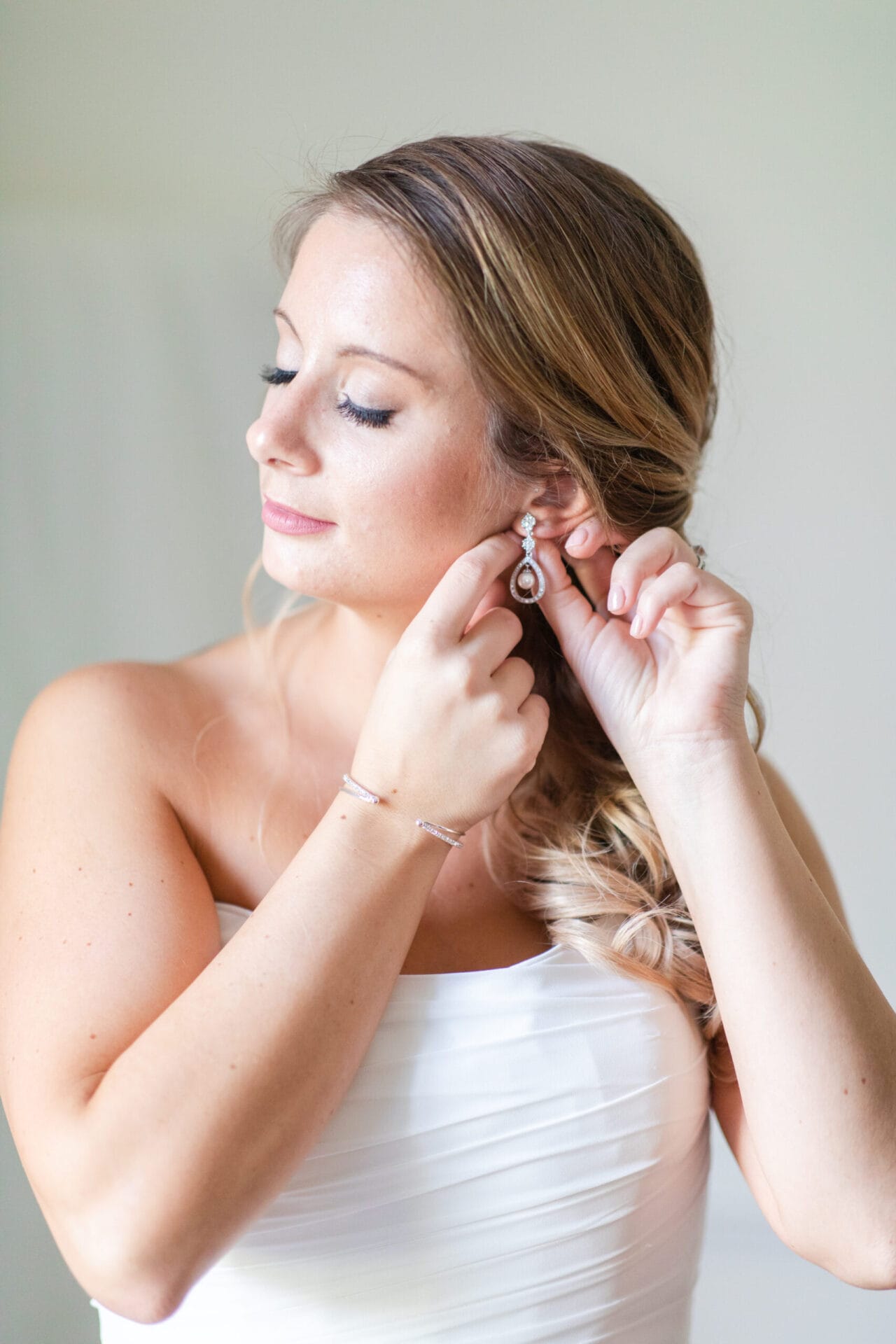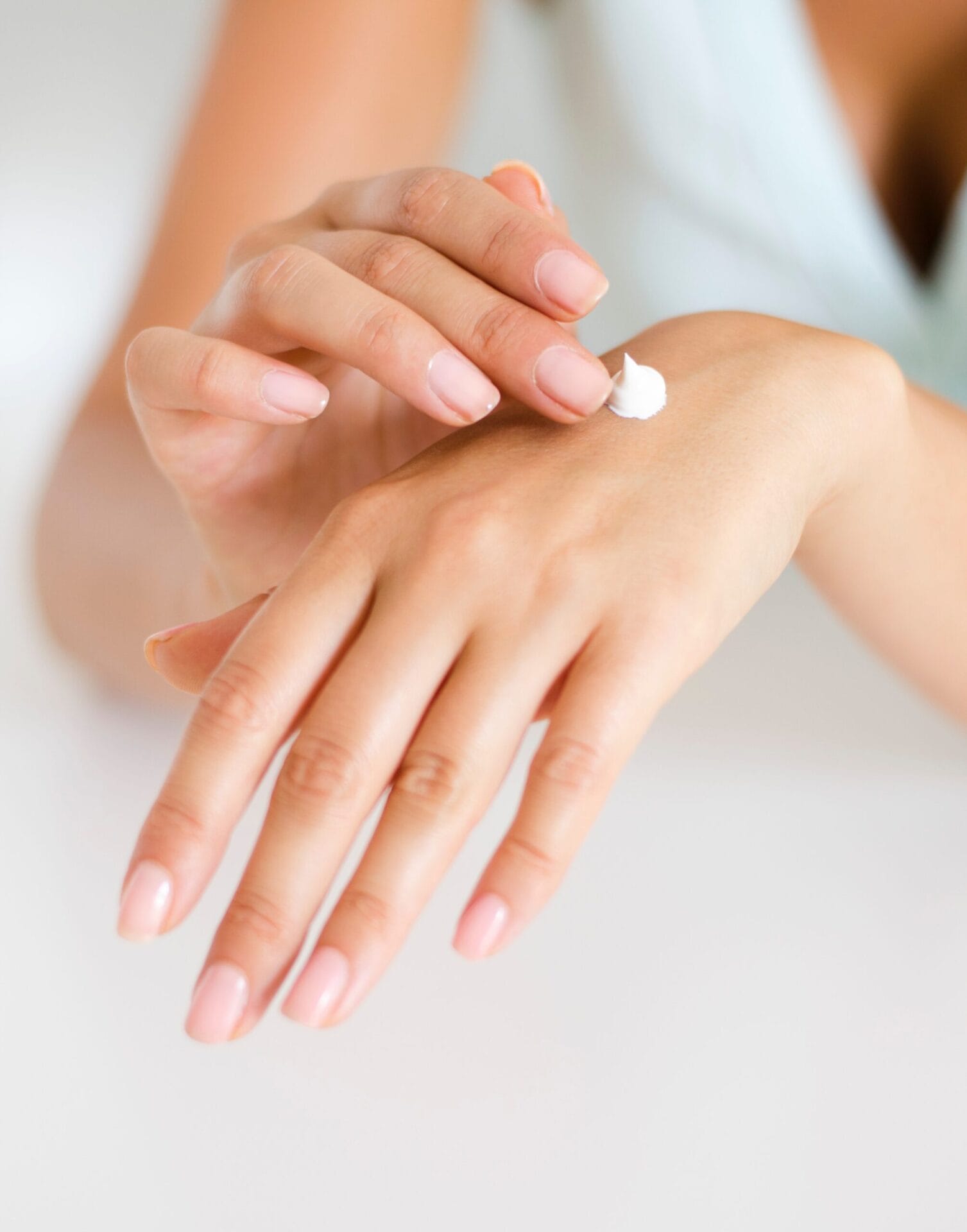By Audrey Chumbris, Owner/Operator of Lulubea Beauty
Starting a gentle skincare routine is a great way to prep your face for your big day. There are so many details to organize as an engaged person, but taking five extra minutes of self-care every morning and night will help you put your best face forward! Here are a few tips to get you started.
Cleansing.
Use a gentle cleanser like micellar water or an oil-based foaming cleanser if your skin is dry. Makeup wipes are a good start, but you should always follow a makeup wipe with a gentle cleanser to ensure you remove all the dirt, oil, and free radicals on your skin.
Exfoliation is key to smooth skin.
Using a sonic skin cleanser daily will not only gently exfoliate but will also help stimulate collagen. Sonic cleansers offer different attachments to clean all skin types and will help prepare your skin to soak up your serum and moisturizer.
Toning, why is it important?
Not only does toner help remove any lasting oil on your face but a good toner will bring your skin pH back to 5.5, effectively bringing it back into balance. This balanced pH will help regulate oil production and prevent over-drying. Additionally, a toner will help reduce the size of your pores and will feel refreshing and revitalizing during your skincare routine.
To serum or not to serum.
Serums are a fine tuner; they help address a particular issue anywhere from overactive oil glands to fine lines. They penetrate deeper into the skin, adding moisture and delivering their target active ingredient. Serums can also improve the texture of your skin depending on the formulation. Finding the right one can take a little time, so be sure to start early. Serums are best used after toner and before a moisturizer.

MJ Mendoza Photography
Moisturizer, lotion, gel or cream? Which is the right type for your skin and what are the differences between them?
Moisturizers not only bring hydration to your skin but also work under makeup to help set foundation into skin properly.
- Lotion has a lower percentage of oil to water than creams. Lotions tend to be better for oily skin, can have a slight drying effect, and are good for daytime wear. For skin that tends to perspire more in the summer using a lotion can be a good solution.
- Gel is a water-based moisturizer and lighter than a cream. Generally, they include humectant ingredients that capture water molecules in the epidermis such as Hyaluronic acid. This is why gels don’t have a greasy feel to the finish. Gels are good for most skin types, work well for daytime and nighttime, and are not too heavy for summer. Currently, many retail and dermatological grade brands now offer a gel with targeted ingredients for any specific concerns you might have.
- Cream is the most emulsive, substantial feeling facial moisturizer. Creams have a higher oil to water ratio within the formula. They tend to be better suited to drier skin types and are very hydrating and softening. The thick formula can be beneficial in winter to help stay away from seasonal dryness. Many creams have additional properties for specific skin concerns like dryness, fine lines, and uneven texture.

After proper skin cleansing and preparation, your face is ready to wear foundation. But what kind of coverage do you need? Let’s talk about foundation education! Here is a breakdown of the four most common levels of foundation coverage
- Sheer foundation is the most translucent and transparent. It contains the least amount of skin tone pigment and doesn’t contain more than 8-13% of it in the formula. Good for a natural everyday look, and as an added plus, many contain sunscreen.
- Light coverage provides help for some unevenness in the skin tone, but will not cover freckles. The pigment is normally 13-18% of the formula. Many BB and CC creams fall into this category. With the advancements in foundation in the last 10 years, some high definition makeups are in this category.
- Medium coverage will appeal to most brides on their wedding day. It will cover freckles, redness from some acne, and unevenness. This foundation is set with a translucent powder to complete the finish and contains 18-23% pigment. Most liquid creams and airbrush foundations fall into this category. It is also sealed with a finishing spray for long wear. These can also contain moisturizers, sunscreens, and anti-aging ingredients.
- Full coverage is for very opaque skin. It is generally used to cover scars, discoloration, hyperpigmentation, birthmarks, and some skin conditions like vitiligo. Full coverage is also sometimes called corrective or camouflage. Most of these foundations contain up to 35% pigment, but some professional grades can have up to 50% pigment. This also comes in liquid, cream, and airbrush formulas and must be set with a translucent powder. Like the medium coverage, these can also contain other ingredients like sunscreen, moisturizers and antiaging products.
Focusing on your skincare will help you put your best face forward on your wedding day and all the days to come. Taking time daily for self-care will not only improve your skin, but it can also help you destress before your big day!
Audrey is a licensed cosmetologist and makeup artist in VA and DC and has been working in the wedding industry since 2012. She currently travels nationally providing on-location bridal and tv/movie hair and makeup services. She is the Owner/Operator of Lulubea Beauty in Richmond, Virginia.
*Always consult a dermatologist if questions arise when making decisions about skincare routines.*
